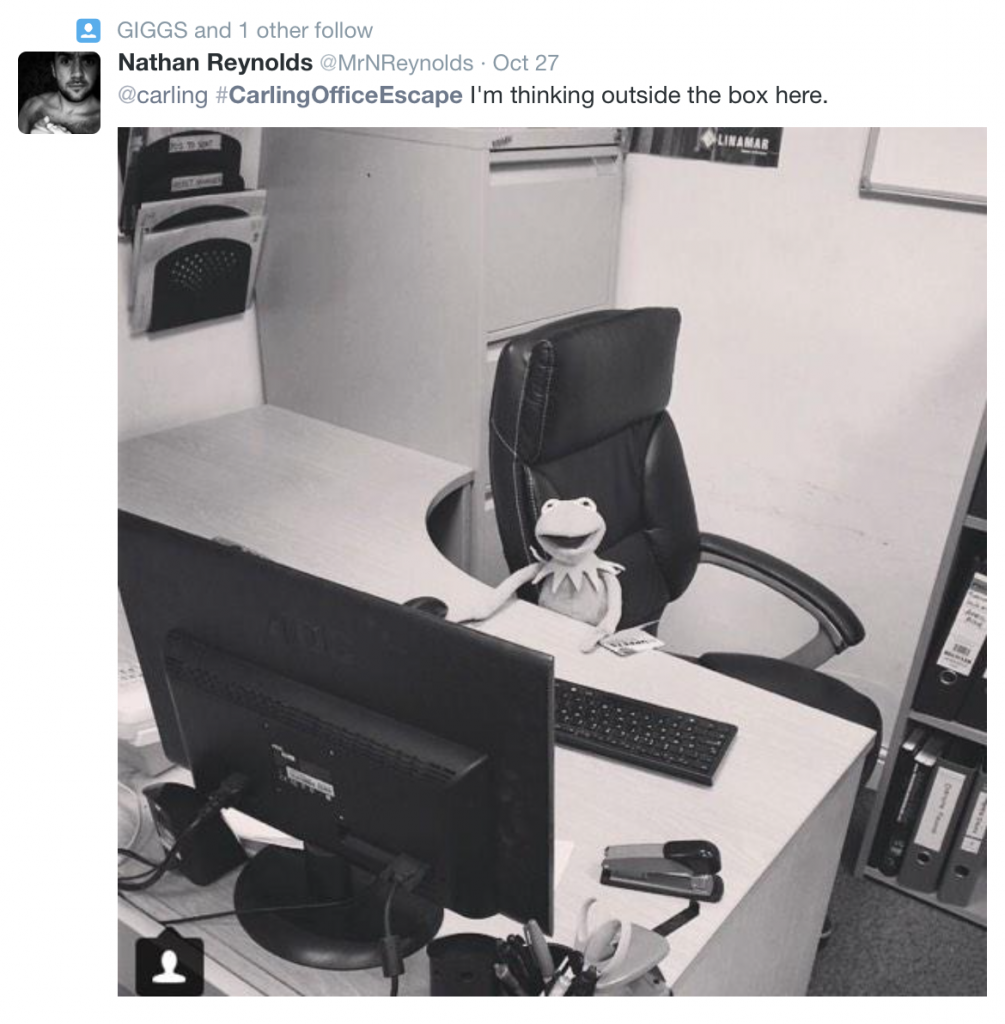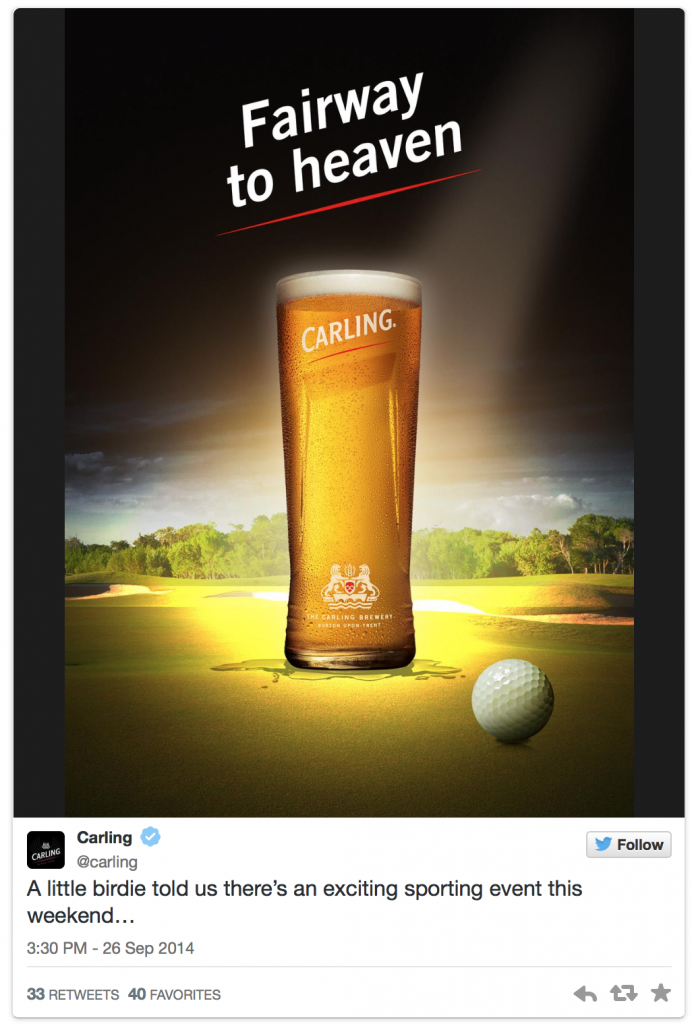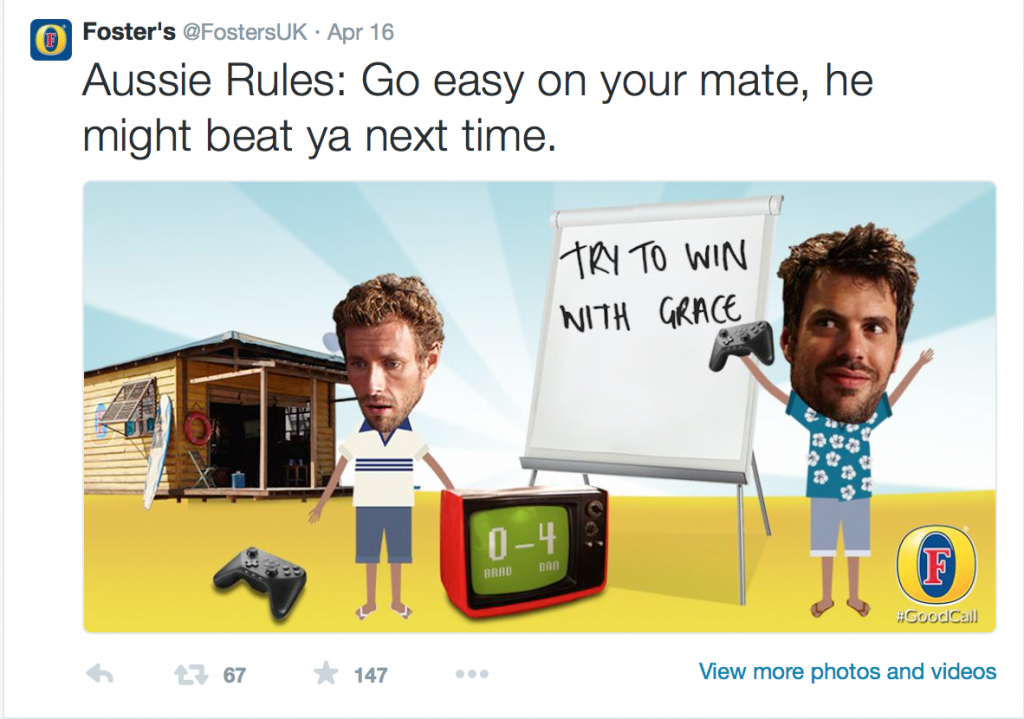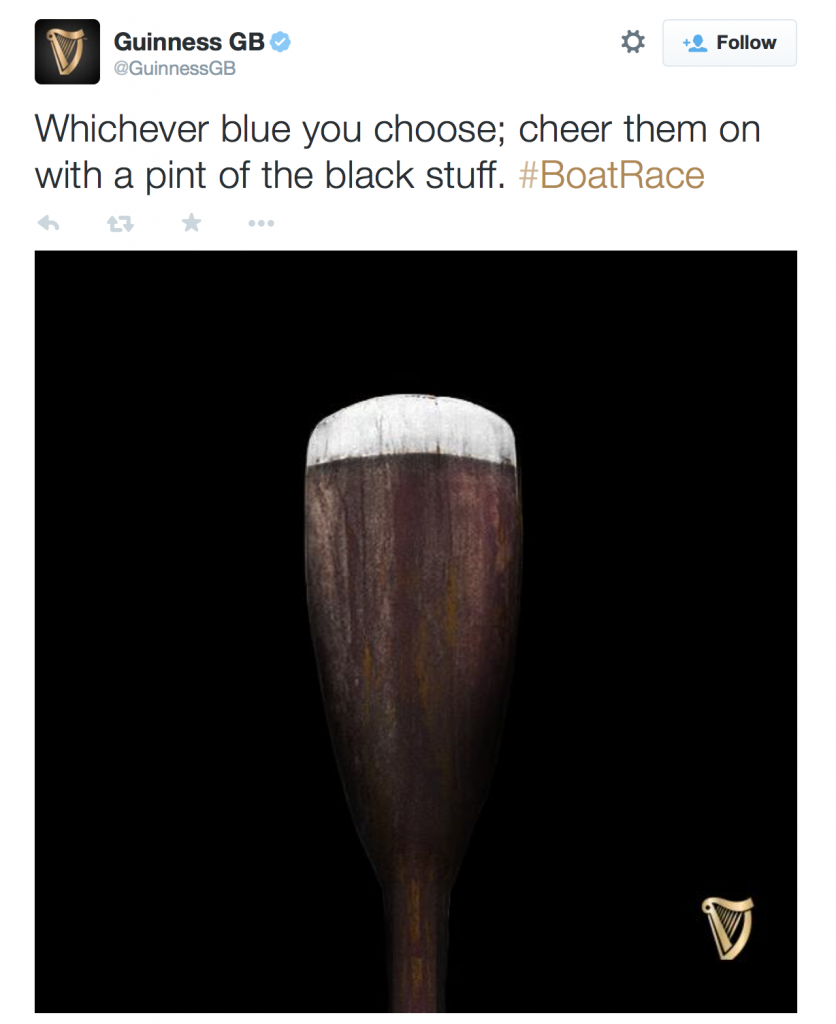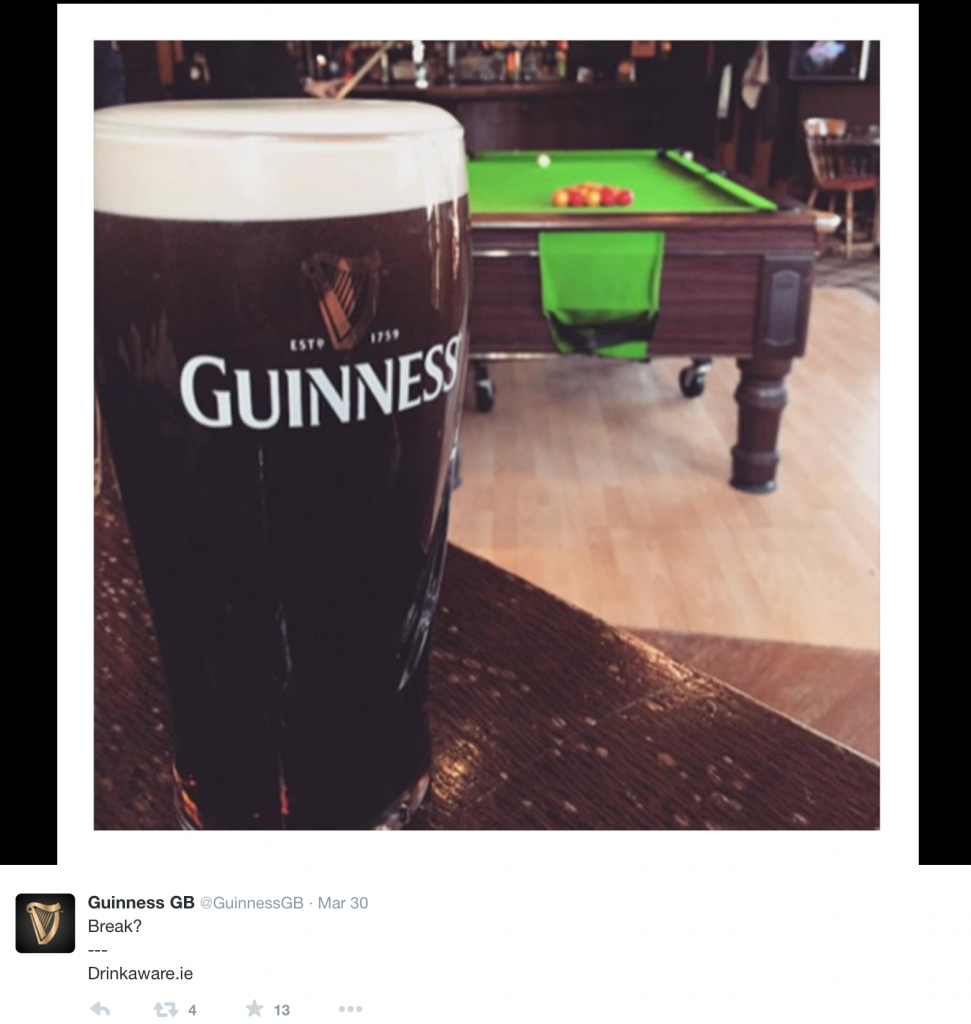Apr
2015
Beer Companies, Are they using Social Media Responsibly?
Alcohol advertising in the UK is subject to some of the most rigorous rules in the world. For reasons which are very straightforward that is, as noted by Snyder et al (2006), youth who saw more alcohol advertisements on average drank more.
They place a particular emphasis on protecting young people. Alcohol ads must not be directed at people under 18 or contain anything that is likely to appeal to them by reflecting youth culture or by linking alcohol with irresponsible behaviour, social success or sexual attractiveness.
These mandatory rules, as independently regulated by the Advertising Standards Authority (ASA) apply across all media, whether offline or online.
Which brings us to social media. How does an alcoholic beverage brand successfully run a social media channel, full of appealing content and personal engagement while sticking to the right side of the regulations?
Korgaonkar et al (1986) suggested 3 ways in which an ad campaign can be classed as successful:
- Ensure the correct intention of the campaign is set out clearly.
- Make sure your ad campaign is unique to another other competitor.
- Ensure your company has enough resources to adapt to the situation (rewards, difficulties).
Lets take a look at some of the most popular brands in the UK…..
Carling
Carling’s most successful strategy surrounds its #CarlingOfficeEscape campaign. This contest earned the company its most shared response on social media with the amount of likes and retweets it received.
An example..
With many adverts floating around the TV, the response to this was unfathomable and here are just a few responses from twitter.
Again, aligning itself with sporting events gives Carling something to talk about and inspires shareable content. Making the company heard around the time when the Ryder Cup was on was a great move for the company.
Fosters
Foster’s now exclusively tweets from its Foster’s Funny Twitter account. Here you’ll find the two Australians from its TV commercials repurposed into various memes and awkwardly Photoshopped images.
Using these two established characters that already fit the tone of your products provides Foster’s with endless content and can continue to run the joke that many of us find amusing. #GoodCall
However, there is a negative side, if you’re just relying on the same characters then you’re running the risk of putting followers off who are getting sick of them. If you scroll back through the site, you’ll see that this has been going on for over a year! Cor’ blimey.
Guinness
Guinness has many years worth of marketing wins in the bank, thanks to its groundbreaking and classic television adverts.
Its Twitter feed doesn’t exactly set the world alight in the same innovative way, instead it offers old-world warmth, comfort food and nostalgia.
Guinness is also one of the few beer brands here that makes a point of regularly making the ‘enjoy responsibly’ message clear and includes a link to drinkaware.ie.
Are Beer brands acting responsibly?
You can make your own assumption from the examples above that only guinness are the ones that are promoting a drink aware campaign and are the only ones acting mildly responsible. However it is not up to them to completely eradicate this from their social media sites. They state on their biographies that their sites are over 18’s and that they hold no responsibility, therefore is it really their problem if an under 18 drinks more if they look at the company’s twitter?
Korgaonkar, P.K., Bellenger, D.N. & Smith, A.E. 1986, “Successful industrial advertising campaigns”, Industrial Marketing Management, 15(2), pp. 123-128.
Snyder L,B., Milici F, Slater, M., Sun, H., Strizhakova, Y,. 2006. Effects of Alcohol Advertising Exposure on Drinking Among Youth. Arch Pediatr Adolesc Med. 160(1): pp. 18-24
